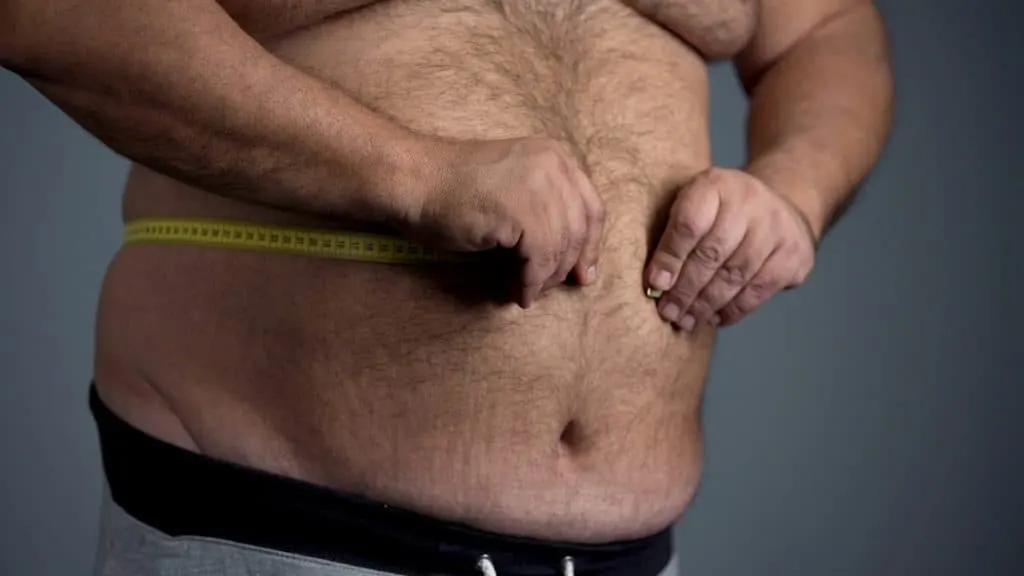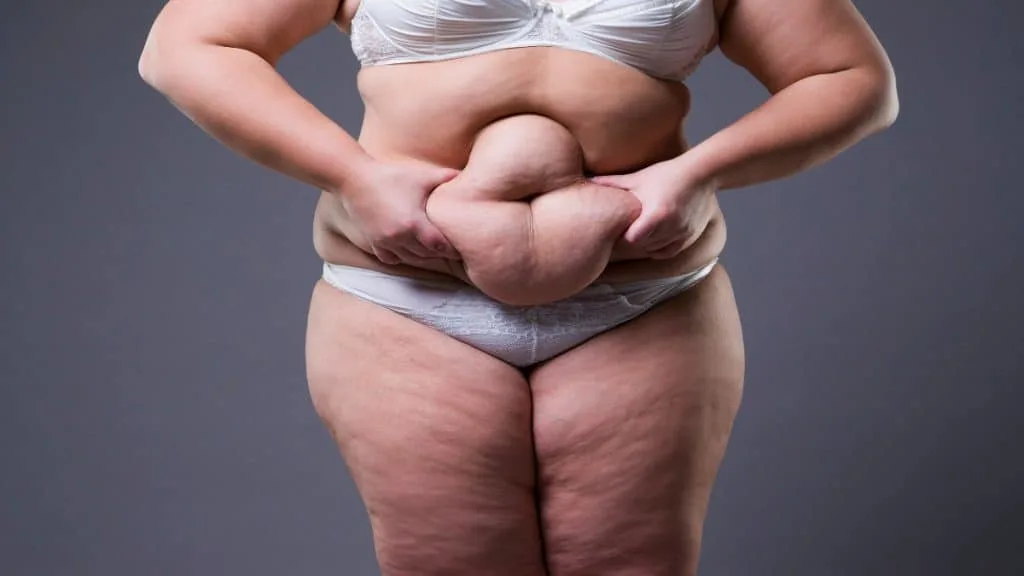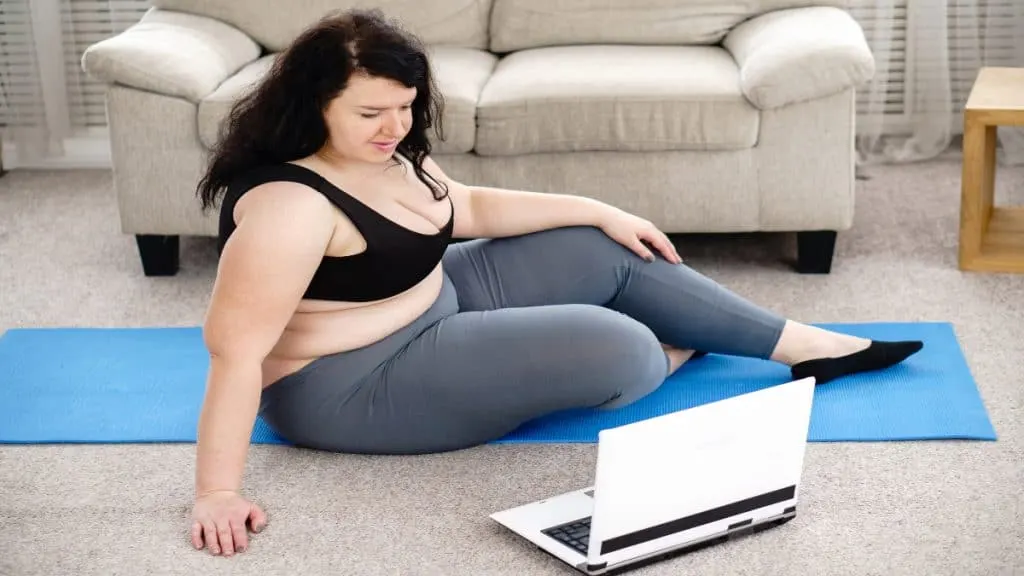A 53 inch waist circumference isn’t a very healthy waist measurement for men and women because having an excessively big stomach increases your risk of chronic disease.
But you probably know that already.
With that in mind, after recapping the undeniable dangers of having a 53″ waist, this article will give you some scientifically proven and yet highly practical strategies for shedding your stomach fat and slimming your 53 in waist.
Related Waist Measurement Guides:
How large is a 53 inch waist?

Based on the data, a 53 inch waist is 13 inches larger than average for a man and 15 inches bigger than normal for a woman.
Now, just because your 53 inch waistline is bigger than average doesn’t mean that it’s completely abnormal.
Indeed, if you walk around any city, you’ll see plenty of obese people with large waistlines.
Therefore, you’re not alone in having a 53 inch waist, especially considering that obesity is a growing problem. In fact, research shows that having an excessively big waist size—especially in relation to your height—can increase your risk of premature death. [1]
Should you be concerned about having a 53 inch waist?

If you value your physical health and longevity, then you should be concerned about having a 53″ waist. Although you shouldn’t feel ashamed for looking a certain way, you simply can’t live life in your best health while walking around with a 53 in waist.
Obesity, after all, often leads to a variety of health conditions and illnesses like diabetes, joint pain, heart disease, and high blood pressure—all of which will reduce your quality of life (and some of which will shorten your life).
The reason that waist circumference is such a good indicator of your health status is that it focuses on a problem area. What I mean by this is that it’s possible to be obese per BMI calculations due to having high amounts of muscle mass (BMI doesn’t measure your body fat). [2] However, it’s not possible to have a 53 inch waist without having excess stomach fat.
How can you lose fat from your 53 in waist?

There are no two ways about it; if you want to slim down your stomach or any other body part, you need to be in an energy deficit.
This simply means that you need to burn more energy than your body takes in, which you can do by restricting your calories and increasing your activity level.
Calorie restriction and exercise are two weight loss variables that you can manipulate according to your preferences. For example, if you’re already exhausted from your workouts and have hit a weight loss plateau, then you could drop your calories a bit more to get the fat-burning process rolling again.
Likewise, you can perform more exercise (or more intense exercise) to create a bigger energy deficit. High-intensity training, in particular, appears to be especially effective for burning body fat. [3]
But you needn’t go to the gym to improve your fitness and shed the pounds. Performing a simple bodyweight circuit at home is a great way to level up your fitness and tone your muscles.
You could start with burpees, move onto squats, and then finish with jumping jacks. This example tri-set strengthens your legs and core while giving your cardiovascular system an intense workout.
Best of all, such a routine requires absolutely no equipment, which also means that you won’t have as many excuses for missing workouts!
Conclusion: What can you expect on your stomach slimming journey?

You didn’t build a 53 inch waist overnight. As such, you’re not going to get in shape in a few days or even a few weeks.
You can certainly see positive physical changes in your body within a month (and especially your stomach, if that’s a problem area for you) if you exercise consistently and make healthy, nutritious food choices.
Taking regular waist measurements (1-2 times per month is fine) is a good, accurate way to track your stomach slimming progress and validate your lifestyle changes.
References
- Krakauer, N. Y., & Krakauer, J. C. (2012). A New Body Shape Index Predicts Mortality Hazard Independently of Body Mass Index. PLoS ONE, 7(7), e39504. https://doi.org/10.1371/journal.pone.0039504
- Gómez-Ambrosi, J., Silva, C., Galofré, J. C., Escalada, J., Santos, S., Millán, D., Vila, N., Ibañez, P., Gil, M. J., Valentí, V., Rotellar, F., Ramírez, B., Salvador, J., & Frühbeck, G. (2011). Body mass index classification misses subjects with increased cardiometabolic risk factors related to elevated adiposity. International Journal of Obesity, 36(2), 286–294. https://doi.org/10.1038/ijo.2011.100
- StackCommerce. (2021, July 14). HIIT training is the key to meeting your fat-loss goals this summer. New York Post. https://nypost.com/2021/07/14/hiit-training-is-the-key-to-meeting-your-fat-loss-goals/

